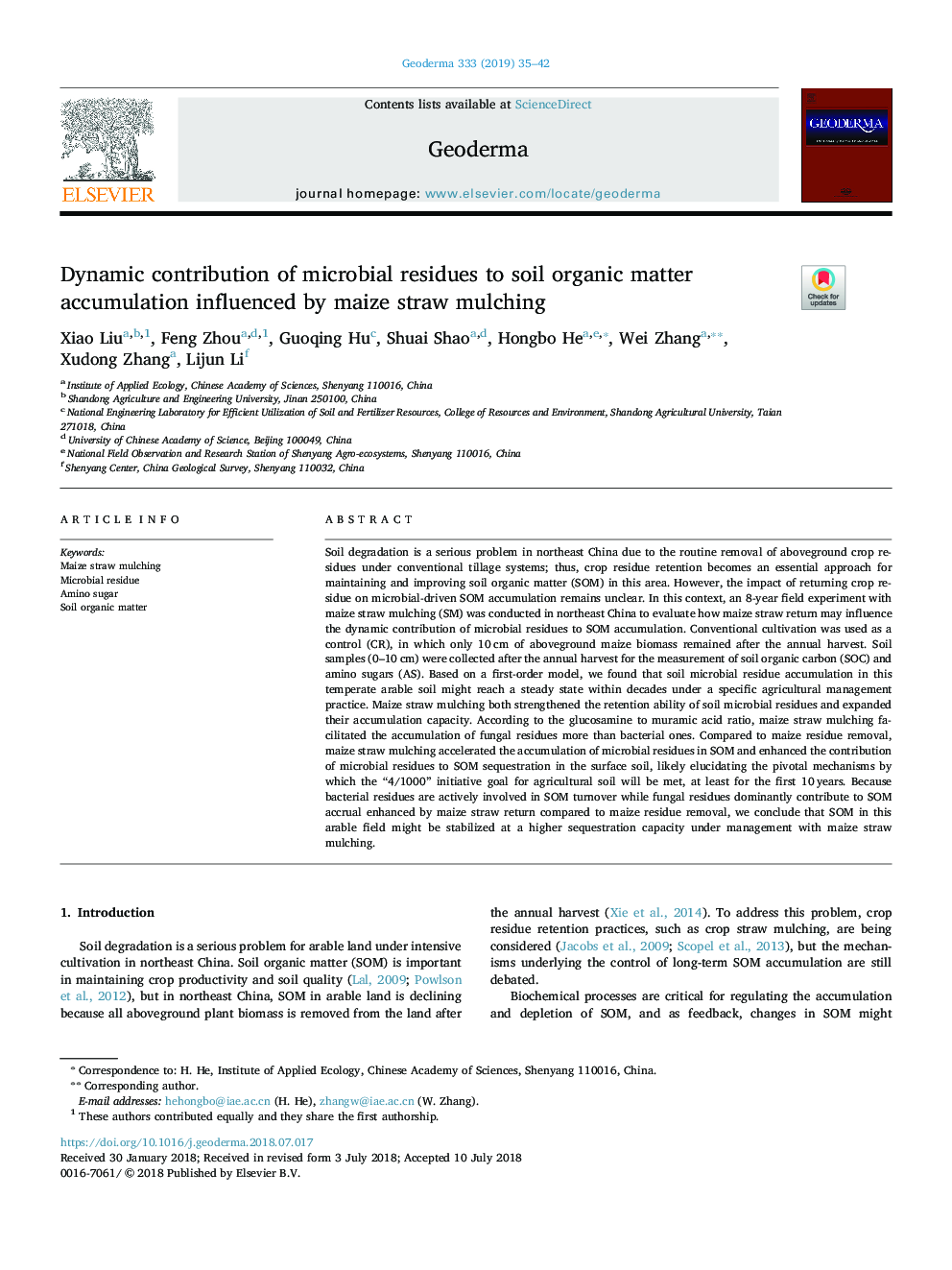| کد مقاله | کد نشریه | سال انتشار | مقاله انگلیسی | نسخه تمام متن |
|---|---|---|---|---|
| 8893838 | 1629384 | 2019 | 8 صفحه PDF | دانلود رایگان |
عنوان انگلیسی مقاله ISI
Dynamic contribution of microbial residues to soil organic matter accumulation influenced by maize straw mulching
ترجمه فارسی عنوان
مشارکت پویا از باقی مانده های میکروبی به انباشت ماده آلی خاک، تحت تأثیر مالچ های نی ذرت است
دانلود مقاله + سفارش ترجمه
دانلود مقاله ISI انگلیسی
رایگان برای ایرانیان
کلمات کلیدی
مالچ نی نی باقی مانده های میکروبی، شکر آمینو ماده آلی خاک،
موضوعات مرتبط
مهندسی و علوم پایه
علوم زمین و سیارات
فرآیندهای سطح زمین
چکیده انگلیسی
Soil degradation is a serious problem in northeast China due to the routine removal of aboveground crop residues under conventional tillage systems; thus, crop residue retention becomes an essential approach for maintaining and improving soil organic matter (SOM) in this area. However, the impact of returning crop residue on microbial-driven SOM accumulation remains unclear. In this context, an 8-year field experiment with maize straw mulching (SM) was conducted in northeast China to evaluate how maize straw return may influence the dynamic contribution of microbial residues to SOM accumulation. Conventional cultivation was used as a control (CR), in which only 10â¯cm of aboveground maize biomass remained after the annual harvest. Soil samples (0-10â¯cm) were collected after the annual harvest for the measurement of soil organic carbon (SOC) and amino sugars (AS). Based on a first-order model, we found that soil microbial residue accumulation in this temperate arable soil might reach a steady state within decades under a specific agricultural management practice. Maize straw mulching both strengthened the retention ability of soil microbial residues and expanded their accumulation capacity. According to the glucosamine to muramic acid ratio, maize straw mulching facilitated the accumulation of fungal residues more than bacterial ones. Compared to maize residue removal, maize straw mulching accelerated the accumulation of microbial residues in SOM and enhanced the contribution of microbial residues to SOM sequestration in the surface soil, likely elucidating the pivotal mechanisms by which the “4/1000” initiative goal for agricultural soil will be met, at least for the first 10â¯years. Because bacterial residues are actively involved in SOM turnover while fungal residues dominantly contribute to SOM accrual enhanced by maize straw return compared to maize residue removal, we conclude that SOM in this arable field might be stabilized at a higher sequestration capacity under management with maize straw mulching.
ناشر
Database: Elsevier - ScienceDirect (ساینس دایرکت)
Journal: Geoderma - Volume 333, 1 January 2019, Pages 35-42
Journal: Geoderma - Volume 333, 1 January 2019, Pages 35-42
نویسندگان
Xiao Liu, Feng Zhou, Guoqing Hu, Shuai Shao, Hongbo He, Wei Zhang, Xudong Zhang, Lijun Li,
